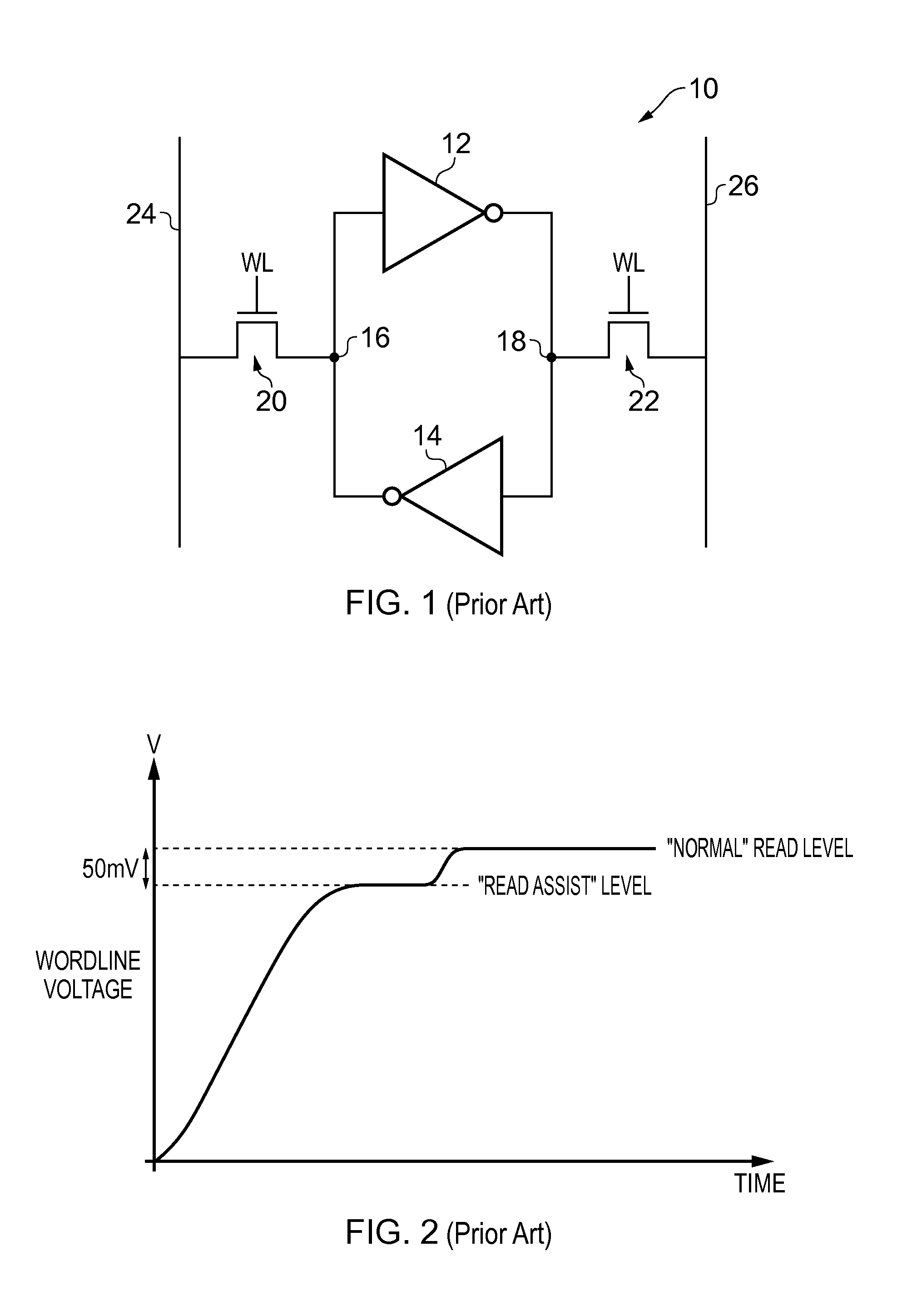Read Assist Techniques in a Memory Device
a memory device and assist technology, applied in the field of memory devices, can solve the problems of lowering stability, low operating voltage, process variation or low operating voltage, and known techniques are susceptible to process and temperature variation, and achieves simple provisioning configuration, reduced asserted voltage, and easy configuration
- Summary
- Abstract
- Description
- Claims
- Application Information
AI Technical Summary
Benefits of technology
Problems solved by technology
Method used
Image
Examples
Embodiment Construction
[0039]FIG. 1 schematically illustrates a known memory cell 10 which essentially consists of a pair of cross-coupled inverters 12 and 14. The configuration of these inverters 12 and 14 is such that the bit cell 10 can stably hold a pair of complementary values at the nodes 16 and 18. A pair of access transistors 20, 22 couples the nodes 16, 18 to the bit lines 24, 26 to enable the pair of values held at the nodes 16, 18 to be written and read out. In order to improve the read stability of the bit cell 10, when a read operation is carried out the word line voltage is asserted as is shown in FIG. 2, wherein the wordline voltage is temporarily held back from reaching the “normal” read level at a “read assist” level which is approximately 50 mV below it. One of ordinary skill in the art will be familiar with the manner in which this reduction in the word line read voltage helps to prevent the content of the bit cell 10 from being disturbed by the read process and further description ther...
PUM
 Login to View More
Login to View More Abstract
Description
Claims
Application Information
 Login to View More
Login to View More - R&D
- Intellectual Property
- Life Sciences
- Materials
- Tech Scout
- Unparalleled Data Quality
- Higher Quality Content
- 60% Fewer Hallucinations
Browse by: Latest US Patents, China's latest patents, Technical Efficacy Thesaurus, Application Domain, Technology Topic, Popular Technical Reports.
© 2025 PatSnap. All rights reserved.Legal|Privacy policy|Modern Slavery Act Transparency Statement|Sitemap|About US| Contact US: help@patsnap.com



